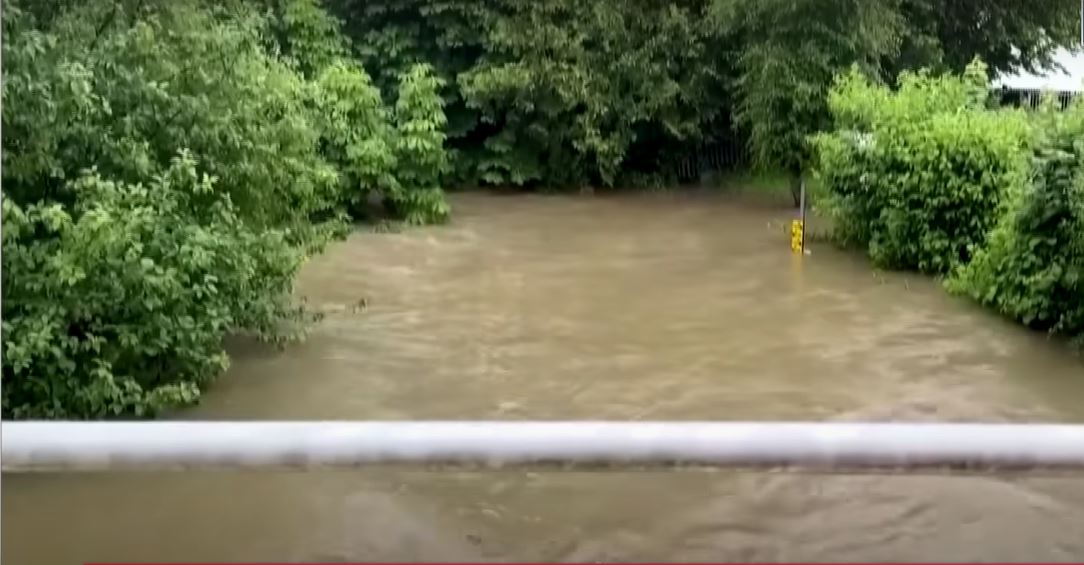From 6 a.m. on Saturday, Tobias Kunz has been under constant pressure. The mayor of Nordendorf, a tiny town of 2,600 people north of Augsburg, is battling the River Schmutter’s flooding with great desperation.

He’s attempting, together with 300 volunteers, to rescue the neighborhood elementary school. “Yesterday we filled 40,000 sandbags and built a 240-meter-long dike with them,” he stated to DW.
Updated road projects for June 3rd week
“A few of the assistants haven’t slept in forty hours of standing around. However, even it was insufficient given the excessively high water levels today.”
While Kunz, in charge of organizing the relief efforts, is being barraged with inquiries every second, the volunteers are working quickly to load the black sandbags from one corner to the other.
He laughs melancholically and says, “This Monday, the school will definitely be closed.”
But the fact that the dam has failed and the fight against the water surrounding the new sports field is lost really depresses him. “
After spending almost a million dollars to construct, our school’s sports field was submerged in water in fifteen minutes.
Every piece of infrastructure is submerged. The pupils are unable to use the restroom due to the malfunctioning of our sewage system,” he stated.
Similar to many other southern German settlements, hundreds of villages have had to be evacuated from Nordendorf due to the dams’ inability to handle the water.
Initial assessment: The water level reached levels that are often only reached once in a century, and in certain spots, more rain fell in a single day than in a whole month.
This past weekend, Bavaria and Baden-Württemberg were especially hard hit; several towns had to declare states of emergency. There is one missing individual and one deceased firefighter.
A few kilometers farther south in Kühlenthal, four young men stood a bit indecisively; for many, too, the depth of the floods was a stunning surprise.
Their issue: Due to today’s flooding, they are unable to access the house that they were occupied fortifying with sandbags yesterday. They have now evacuated the village.
“It’s the house of one of our parents, who are on vacation in Austria,” they stated to DW.
“Yesterday, we made an effort to preserve what we could. However, the water came from every angle. We managed to maneuver the two automobiles up the mountain and secure their safety, at least.”
The cellars of the nearby houses were entirely submerged, as was an underground parking lot.
The brown sludge is currently being pumped out at a pace of 10,000 liters per minute by the German Federal Agency for Technical Relief, which is on the scene and utilizing a special apparatus.
In Diedorf, there were also dam and dike breaks. Now that the floodwaters are gradually receding and the water levels are dropping once more, nobody at the tiny fire station wants to declare an end to the situation.

Not even the commander of the local fire brigade, Philipp Niegl. Niegl teaches vocational schools and performs this work on a volunteer basis, just like everyone else.
“We added to our equipment to be better prepared after the flood of the century in the Ahr valley [in 2021]: we now have a supply truck that can drive through deep water,” he said. It was able to carry a large number of passengers this time.”
Camp for evacuation established in record time The adjacent sports hall in Diedorf provided lodging for those who had been evacuated and were unable to obtain lodging with friends or family.
The enormous exhibition hall serves as the main hub for receiving stranded people in Augsburg. In record time, a camp with 300 beds was established here.
According to press officer Raphael Doderer, Augsburg has experience managing disasters. A World War II bomb forced the city to evacuate 54,000 residents at Christmas 2016.
“We had 170 people here last night, at noon it was still 130 and now 80,” Doderer stated to DW. “The majority of them are senior citizens, including dementia sufferers, who reside in nursing facilities.

Some of the elderly people needed to be carried by us from the house to a boat using a Unimog vehicle, back into another Unimog truck, and then into an ambulance.”
The large reception hall still held a few old folks, including two female neighbors and Sabine Fischer’s parents. For the Fischer family, it was two in the morning.
Water was creeping into the basement and the Schmutter, which usually meanders softly through Kühlenthal behind the home, was now four meters wide.
“We are waiting and waiting here and don’t know how much water has penetrated our property,” Fischer stated to DW. “We just couldn’t believe things could be much worse. Going home as soon as possible is all we want.”